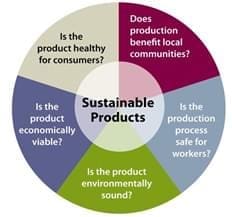Sustainable Products : Save Planet Earth !
Rushin H.Vadhani
AGM-Marketing
AYM Syntex Limited
“You must make a change , to see the change !”
How true & significant is the statement? This question has far reaching effect on next generation & saving our precious planet earth.
In today’s era where we are being technological driven & aiming for driverless cars but we are failing to answer few facts on conversation of our resources & its optimum utilization.
Some Global facts that each one of us need to think :
- 663 million people – 1in 10 – lack access to safe water
- 4 billion people – 1in 3- lack access to a toilet
- More people have mobile phone than a toilet
- A review of rural water system sustainability in 8 countries in Asia, Africa & Central America found an average water failure of 20-40% failure
- Globally, 1/3 of all schools lack access to safe water and adequate sanitation
- In low and middle-income countries, 1/3 of all healthcare facilities lack a safe water source
- The water crisis is no.1 global risk based on impact to society (as a measure of devastation) as announced by the World Economic Forum in January 2015
We can change this ! Sustainable & renewable resources need to be part of our everyday life.
We reserve & reuse basic resources. This will help to create Green planet & maintain ecological balance.
We economize on our driving by using shared resources or we cycle to work or walk to save on our carbon footprint. We reduce our energy usage by buying appliances that conserve water and electricity and we lobby for energy-smart concepts like solar or wind energy production.
And yet, one of the world’s greatest culprits in environmental pollution is something we use every day and probably give the least consideration to its environmental impact: OUR CLOTHES !.
Conventional textile production is one of the most polluting industries on the planet. The World Bank estimates that the textile industry is responsible for as much as 20 percent of industrial pollution in our rivers and land.
Finding ways to curb the environmental pollution caused by textile production starts with finding new ways to produce fabrics that don’t require toxins and large amounts of water and which minimize harm to local ecology.
There are many reasons to be down on today’s fashion industry: water pollution, toxic chemicals, landfill waste, garment worker exploitation in places like Bangladesh, Cambodia and China – the list could go on. Sustainable fashion, innovative groups and sustainably-minded apparel brands offer glimmers of hope that this $1 trillion industry is slowly changing course.
Sustainable textile innovation is nothing new: Some apparel leaders (Patagonia, the North Face, Volcom, Levi’s) have developed product lines made with recycled plastic bottles, natural fibers, renewable fabrics, and other pre- and post-consumer waste. But the use of those textiles has not yet been systematized into global supply chains nor brought to scale.
Sustainable Model :
Sustainable products – Its source, manufacturing , supply & application needs to be streamlined -economically & ecologically beneficial through the value chain . The local communities & society needs to be benefited (CSR activity)
The manufacturing & production process needs to be safe & free from health hazard for employees.
Sustainable products need to be economically viable so that it has mass consumption & awareness /usage is not limited to elite segment or the whole purpose of doing good for planet earth will be defeated.
Finally the end consumer should have economical & health benefits so that he replaces /changes his consumption pattern & demands more. Sustainability is not for products but the model itself needs to be sustainable generating welfare of society at large.
Each year in the U.S. alone, 13.1 million tons of textile waste is created and of this 11 million tons ends up in landfills. Until now, there hasn’t been a viable solution that effectively transforms old clothes into new without compromising quality or strength at affordable business model reaching end customer.
The challenge is to build an ecosystem of brands, innovators and organizations working to transform the apparel and textile industry. Of course, this transformation will not happen overnight. A journey of a thousand miles begins with a single step!
Key References :
- theguardian.com
- water.org
- triplepundit.com
- World bank economic forum report – January 2015

